
Sign in to your XDA account

I actually laughed when I unboxed Asus' ROG Strix G18. I knew the specs, I studied the configuration, but I couldn't help but physically chuckle when taking this massive, 18-inch laptop out of its box. You immediately know how powerful the Strix G18 is when you see it in the flesh. Despite that, after using the laptop for a few weeks, the size and power are the least impressive things about it.
Although the G18 has its share of shortcomings, it's a remarkably robust laptop, and that's not just by the standards of this class of often clunky, 18-inch desktop replacements. Combined with an attractive price and great performance, the G18 is a fantastic laptop to use at a desk. Just don't plan on chucking it in a backpack to go on the road with you.
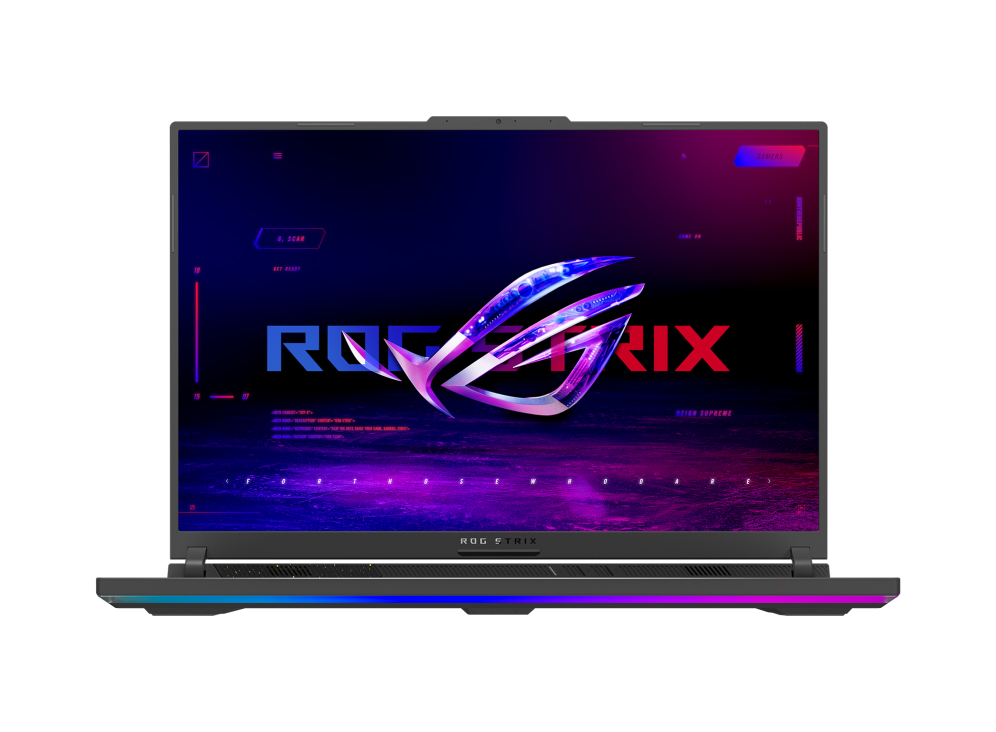
Operating System Windows 11 Home
CPU Intel Core Ultra 9 275HX
GPU Nvidia GeForce RTX 5080
RAM 16GB DDR5-5600
The ROG Strix G18 goes far beyond being big and powerful, though it's still only for a select number of users.
Pros & Cons
- Fantastic performance
- The best mechanical trackpad I've used, ever
- Tool-less entry for RAM and storage upgrades
- Middling display
- Performance doesn't benefit from 18-inch size
Asus ROG Strix G18 pricing and availability
Asus has two versions of the ROG Strix G18 available, and both have several configurations. There's the G814 variant, which uses either a Ryzen 9 8940HX or Ryzen 9 9955HX, and there's the G815 model, which uses a Core Ultra 9 275HX chip. I reviewed the latter model, which, at the time of writing, is the only version available for purchase. The Ryzen version technically launched at the beginning of the year, but laptop rollouts are strange. Keep your eyes peeled if you're interested in the AMD version.
For the Intel version, you can pair the chip with an RTX 5060 up to an RTX 5080. There are no RTX 5090 or RTX 5050 models right now, though I suspect we'll see an RTX 5050 model at some point. Regardless of the configuration, you get the same 18-inch, 1600p IPS display that comes with a 240Hz refresh rate. For storage, the base RTX 5060 model comes with 1TB, but the higher-end models scale up to 2TB. All versions come with two M.2 slots that you can easily upgrade, though. My main quibble is memory. All versions come with just 16GB of DDR5-5600. You can pack in up to 64GB by upgrading the memory yourself, but at least 32GB should be standard on the higher-end configurations.
CPU Intel Core Ultra 9 275HX
GPU Nvidia GeForce RTX 5080
Display type IPS
Display (Size, Resolution) 18 inches, 2,560 x 1,600
RAM 16GB DDR5-5600
Storage 2TB PCIe 4.0 NVMe SSD
Battery 90Whr
Ports 3x USB 3.2 Gen 2 Type-A, 2x Thunderbolt 5, 1x 2.5G Ethernet, 1x HDMI 2.1
Operating System Windows 11 Home
Webcam 1080p w/ Windows Hello
Cellular connectivity N/A
Wi-Fi connectivity WI-Fi 7
Bluetooth Bluetooth 5.4
Form factor Clamshell
Dimensions 15.71 x 11.73 x 0.93 ~ 1.26 inches
Weight 7.05 pounds
The configuration I reviewed, which you can see the specs for in the table above, is available for $3,060 from Best Buy or $2,500 directly from Asus. That's actually not a bad price, expensive as it is. For a more premium 18-inch design like the Razer Blade 18, you'll spend at least $4,000 on an RTX 5080 configuration. And for something like an MSI Titan 18, you can easily spend north of $5,000. The most direct competition is the new Alienware 18 Area-51, which clocks in at $3,100 for an identical configuration plus 32GB of memory.
Of course, you can break out into other form factors, too. The 16-inch Legion Pro 7i clocks in at just over $3,000 for an RTX 5080, for instance. If you're able to pick up the G18 for $2,500, it's really undercutting the rest of the market. At or around $3,000 like the laptop is listed for at Best Buy, however, it's mostly in-line with what you can expect out of a laptop with similar specs constructed from a plastic shell.
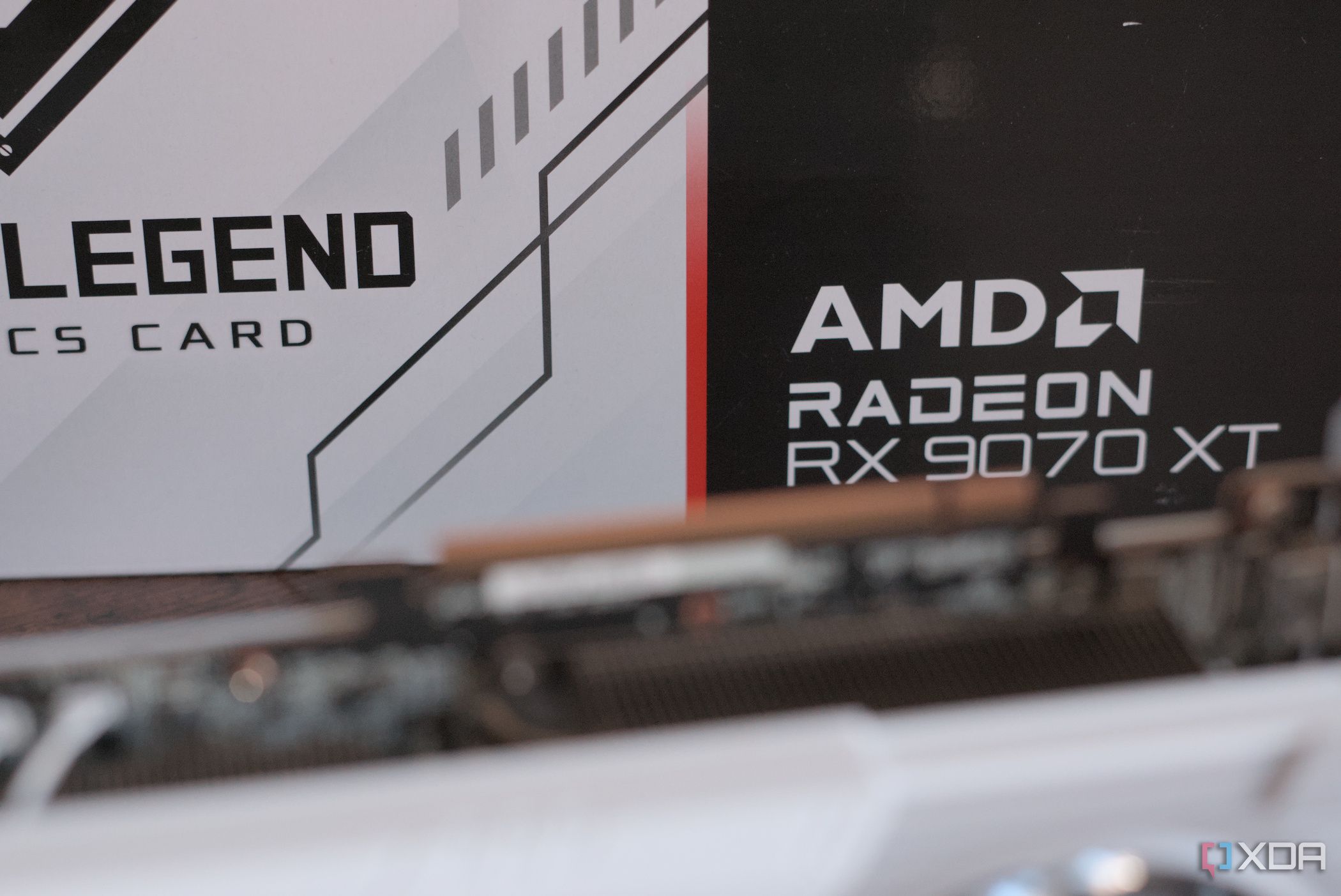
Related
Here's why I don't miss Nvidia after upgrading to an AMD Radeon RX 9070 XT
I'm finally leaving team Green altogether in favor of AMD's new Radeon RX 9070 XT, and I'm not looking back.
A desktop replacement with a unique trick up its sleeve
Tool-less entry makes all the difference
There are a lot of 16-inch laptops I'd classify as desktop replacements, and once you scale up to 18 inches, you're firmly in that category. The ROG Strix G18 feels massive, which is both a fault and an asset. As an asset, it's extremely comfortable to work and game on this laptop. The screen is huge, the trackpad and keyboard don't feel cramped, and the tri-fan cooling setup keeps the laptop near room temperature even when pushing the most demanding games available today. It gets loud, sure, but a decent pair of headphones gets around that issue.
The faults of such a large laptop should be obvious; the G18 is massive and bulky. It's nearly an inch thick (0.93 inches) at even its thinnest point, and it clocks in over 7 pounds regardless of the GPU you pack inside. For context, even a chunky 16-inch laptop like the Acer Predator Helios 16 clocks in at 5.6 pounds. You're dealing 7 pounds before you account for a power brick that's 2.5 pounds on its own.
Thankfully, the G18 is built to justify its weight. Despite being made out of plastic, the shell feels robust. There's basically no deck flex, and the hinge for the display is smooth with just enough resistance to let you know that it's not going to snap off. Despite what feels like a good hinge, there's more screen flex than I'm comfortable with. It's not a deal-breaker, but you could definitely twist the screen into an unusable state with enough pressure.
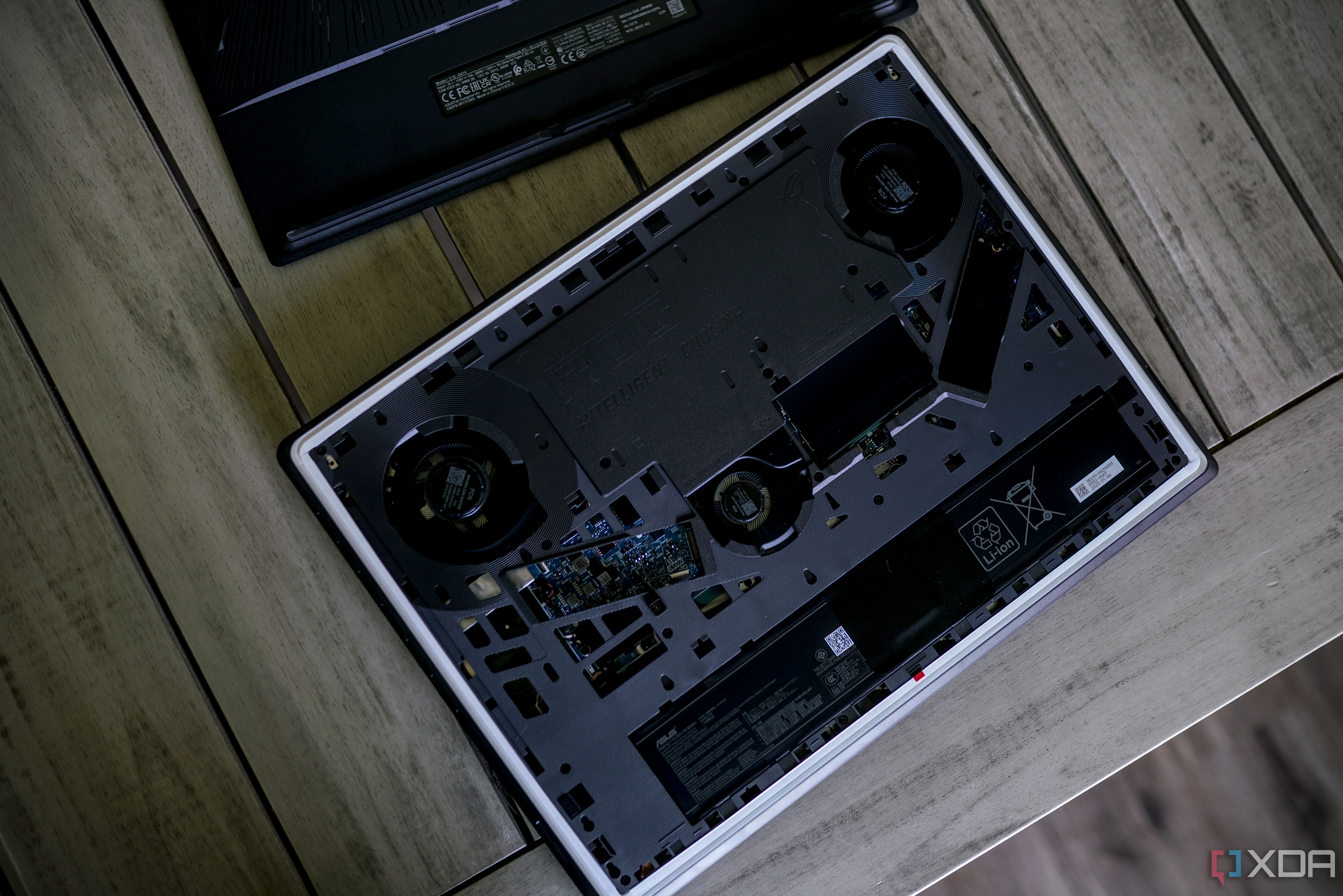
Under the laptop, you'll find a diffused strip of RGB light that runs the parameter of the device, which, in addition to the keyboard, is the only RGB on display. Asus actually positions this layer of light between the internals of the device and the back panel, and for good reason. A toggle on the back will pop off the bottom of the laptop, exposing the internals so you can quickly upgrade your memory, add a second SSD, or clean your fans. Asus blocks off the other components with plastic to protect them, and it makes upgrades super simple.
You can be in and out with an upgrade in a matter of minutes, which is fantastic. It's not difficult to swap your memory or upgrade the SSD on similar gaming laptops, but even saving the time of unscrewing the bottom cover of a laptop is huge. I wish more gaming laptops adopted this style of design.
Speedy display, acceptable image quality
It's a bog-standard IPS display
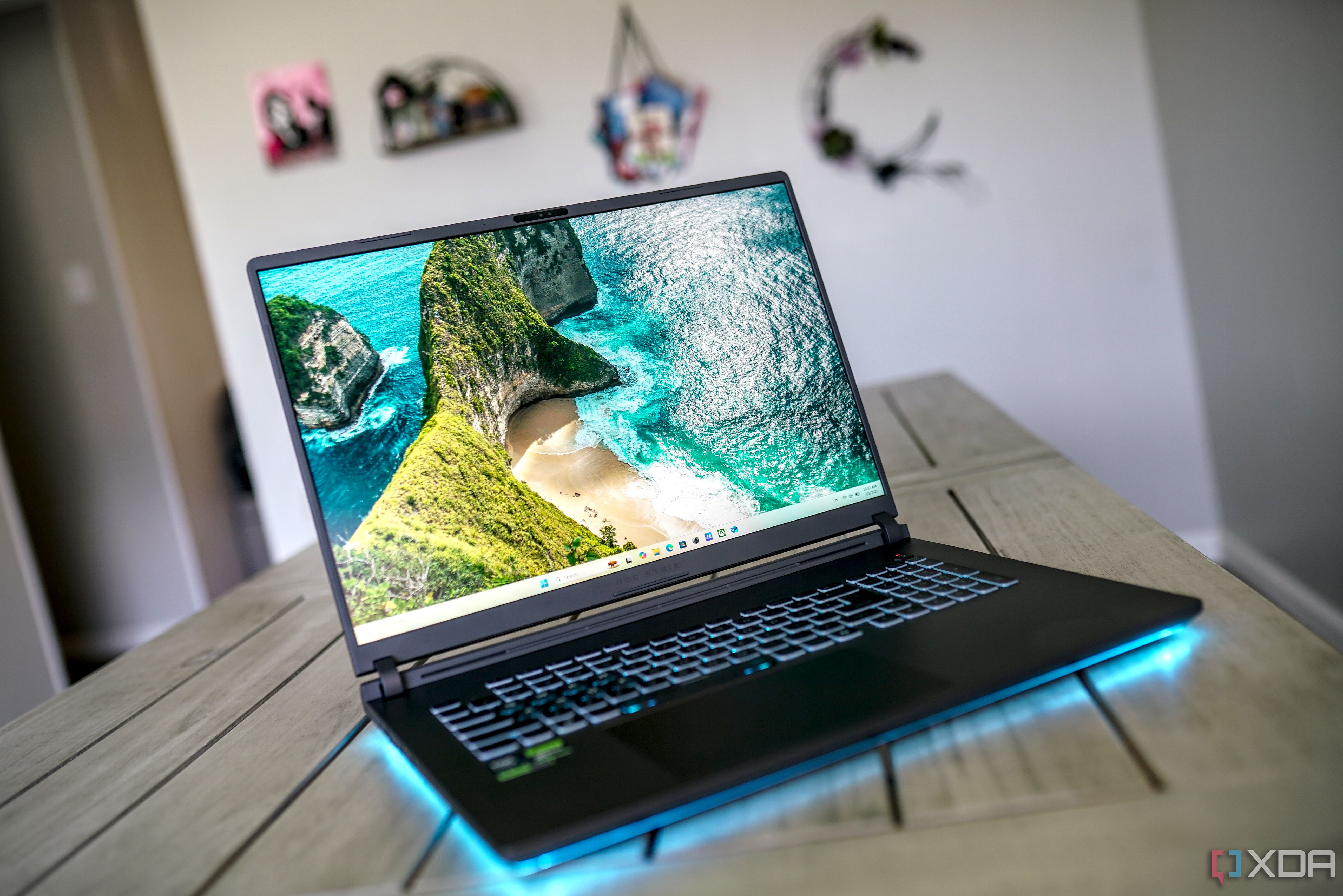
This is about as bog-standard as an IPS display can come, short of a speedy 240Hz refresh rate. Brightness is slightly higher than most IPS panels at around 480 nits, and color accuracy is a touch better at a color error of 0.91. But the colors won't blow you away, nor will the contrast without access to any local dimming. Asus advertises that the display supports Dolby Vision HDR, but good luck finding content that supports Dolby Vision on PC. It's few and far between, and even if you can track it down, the panel quality just can't keep pace with a true HDR image.
It's a cut corner, and considering the price of the Strix G18 and the performance, it makes sense to cut here. The more expensive Strix Scar 18 comes with identical specs for the display, but it uses a mini-LED backlight with over 2,000 dimming zones. Here, you're getting a standard, if speedy, IPS.
The best trackpad I've used, hands down
The most shocking perk of the Strix G18
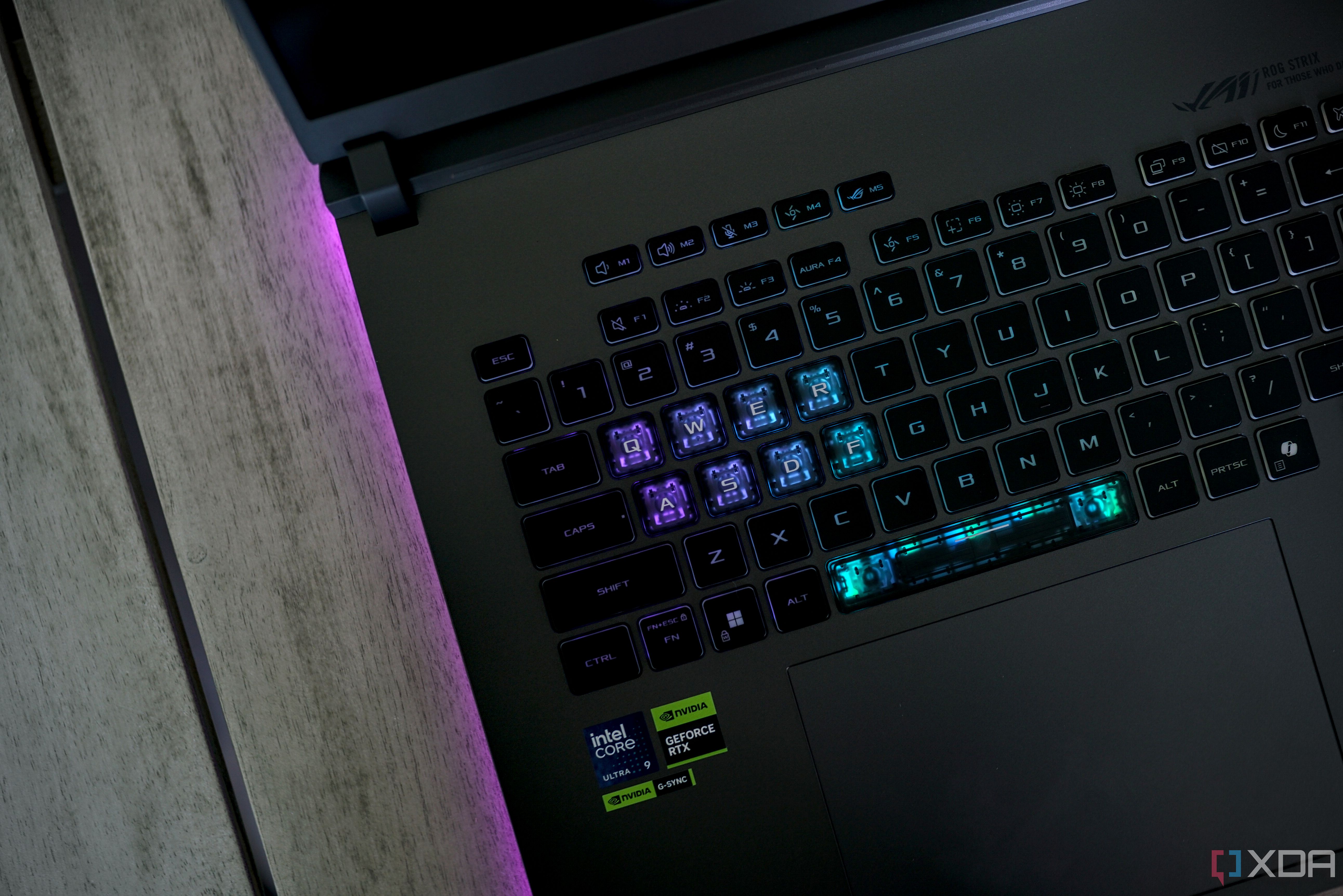
Short of the MacBook, the ROG Strix G18 has the best trackpad I've ever used — believe me, I'm just as shocked as you are. When dealing with massive, 18-inch desktop replacements like the ROG Strix G18 or MSI Titan 18 HX AI, I don't have high expectations for the keyboard and trackpad. You almost always get an inconsistent keyboard with way too long of a travel distance, and a cheap-feeling mechanical trackpad that can't hold up to non-gaming laptops selling for less than $1,000. Not the case here. The keyboard and trackpad on the ROG Strix G18 are excellent, and I'd have no issue working on them day-in and day-out.
The keyboard still has that long travel, but Asus has managed to smooth out the inconsistencies that show up elsewhere, and it's done so for the past several generations of its gaming laptops. The trackpad feels completely new. It's still mechanical, but it almost feels like a haptic trackpad. The click is muted and soft, and it feels excellent as you're gliding across the desktop. I didn't think I'd find my new favorite trackpad on a gaming laptop with the Strix G18, but here we are.
Blistering Lunar Lake, soaring Blackwell
The size doesn't benefit performance, though
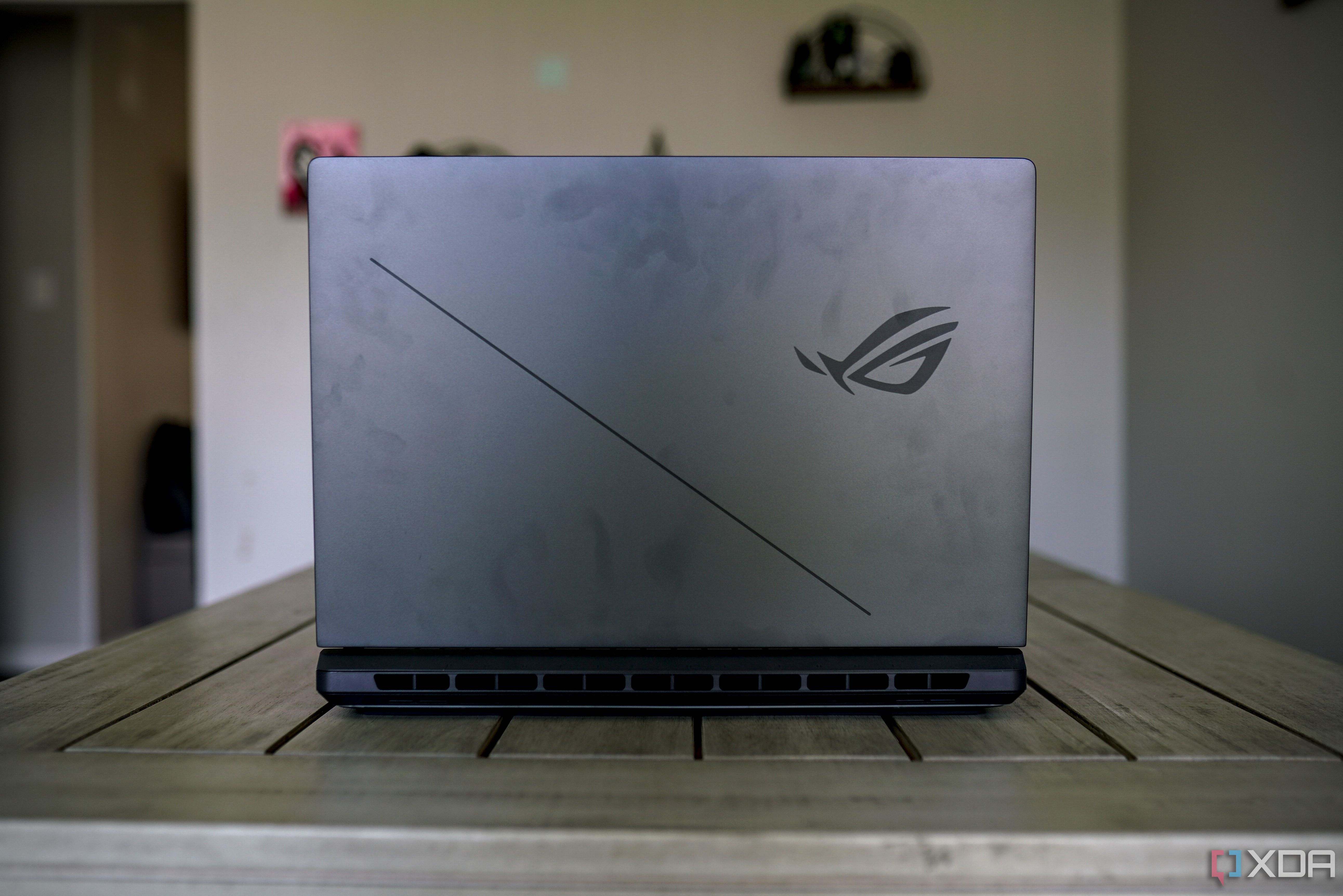
The ROG Strix G18 is blistering in its speed, even if it doesn't fully take advantage of its massive 18-inch chassis. This model comes with one of Intel's Arrow Lake-HX chips; in particular, the Core Ultra 9 275HX. In addition to the processor, you get up to an Nvidia RTX 5080 that tops out at 175W — 150W base TGP, plus 25W from dynamic boost. Lower-end GPUs still get the maximum allowable power, plus a little extra from dynamic boost.
The results below speak for themselves. Compared to even the most performant last-gen laptops, the ROG Strix G18 is in a completely different league. It manages to outclass the mobile RTX 4090 in 3DMark Time Spy, and nearly doubles the score of the mobile RTX 4080. CPU performance is excellent, too. Although there isn't a massive boost in single-core speeds, the Core Ultra 9 275HX is able to provide higher multi-threaded performance compared to last-gen's Core i9-14900HX despite a lack of Hyper-Threading.
|
137 / 2,168 |
135 / 2,079 |
126 / 1,508 |
119 / 1,307 |
|
2,981 / 18,313 |
3,072 / 19,467 |
2,961 / 17,488 |
2,765 / 16,795 |
|
21,188 |
21,368 |
19,684 |
12,800 |
|
11,019 |
11,054 |
10,653 |
6,700 |
|
9,003 / 6,476 |
N/A |
8.583 / 5,971 |
8,804 / 5,239 |
The main issue is the Lenovo Legion Pro 7i. It packs identical specs, and it comes in a much more compact 16-inch chassis. That should make the components more thermally constrained, so you'd expect a small drop in performance. And yet, the Legion Pro 7i is faster almost across the board. The margins are slim, but the fact remains that the 18-inch chassis on the ROG Strix G18 isn't providing a performance advantage. The main reason to pick up such a large laptop is simply because you like the form factor, not for higher peak performance.
I don't want to undersell the capabilities of the ROG Strix G18, though. It's still a very capable gaming laptop, and my results from the games you can see below prove that. Even in games as demanding as Doom: The Dark Ages and Cyberpunk 2077, the G18 manages frame rates north of 60 fps with ease at the display's native 1600p resolution. Even nudging DLSS on in Quality mode usually results in frame rates in the triple digits, and that's before we talk about the Multi-Frame Generation (MFG) capabilities of Blackwell.
|
115 fps |
No DLSS |
|
206 fps |
DLSS Quality + Frame Gen |
|
90.8 fps |
No DLSS |
|
173.9 fps |
DLSS Quality + Frame Gen |
|
169.1 fps |
DLSS Balanced + 4X |
|
60 fps |
DLSS Quality |
|
168 fps |
DLSS Balanced + 4X |
|
69.3 fps |
No DLSS |
|
154 fps |
DLSS Quality + Frame Gen |
|
134.1 fps |
DLSS Balanced + 3X |
MFG really does wonders for a machine like this. In Cyberpunk 2077, Black Myth: Wukong, and Doom: The Dark Ages, MFG allows you to play these games with triple-digit frame rates while using real-time path tracing. That's insane, and it's a massive testament to what MFG is capable of when you pair already capable hardware with demanding rendering scenarios and a high refresh rate. It's not perfect, but the DLSS 4 suite shines when you already have such powerful hardware.
I don't suspect anyone expected good battery life out of the ROG Strix G18, but if you did, I have bad news for you. Despite packing a large 90Whr battery, the G18 died in a little under four hours with light web browsing. Nvidia's Optimus does its work to conserve your battery, and you have USB-C power delivery available if you need it. But let's be honest — if you're already lugging around a laptop as large as the G18, you can probably manage to take the power brick, too.
Should you buy the Asus ROG Strix G18?
You should buy the Asus ROG Strix G18 if:
- You need a desktop replacement at a reasonable price.
- You don't need to lug it around often.
- You don't mind upgrading the RAM down the line.
You should NOT buy the Asus ROG Strix G18 if:
- You want top-tier display quality.
- You need the battery to last a full day.
- You travel a lot.
You already know what to expect out of the Strix G18. The size will turn away some, but if you're in the market for a massive desktop replacement, it's hard going wrong here. The screen isn't ideal, the battery life stinks, and the 18-inch size doesn't net you any extra performance. But you're still getting top-shelf performance, and for a price that undercuts the competition at $2,500.

Operating System Windows 11 Home
CPU Intel Core Ultra 9 275HX
GPU Nvidia GeForce RTX 5080
RAM 16GB DDR5-5600
The ROG Strix G18 goes far beyond being big and powerful, though it's still only for a select number of users.
.png)
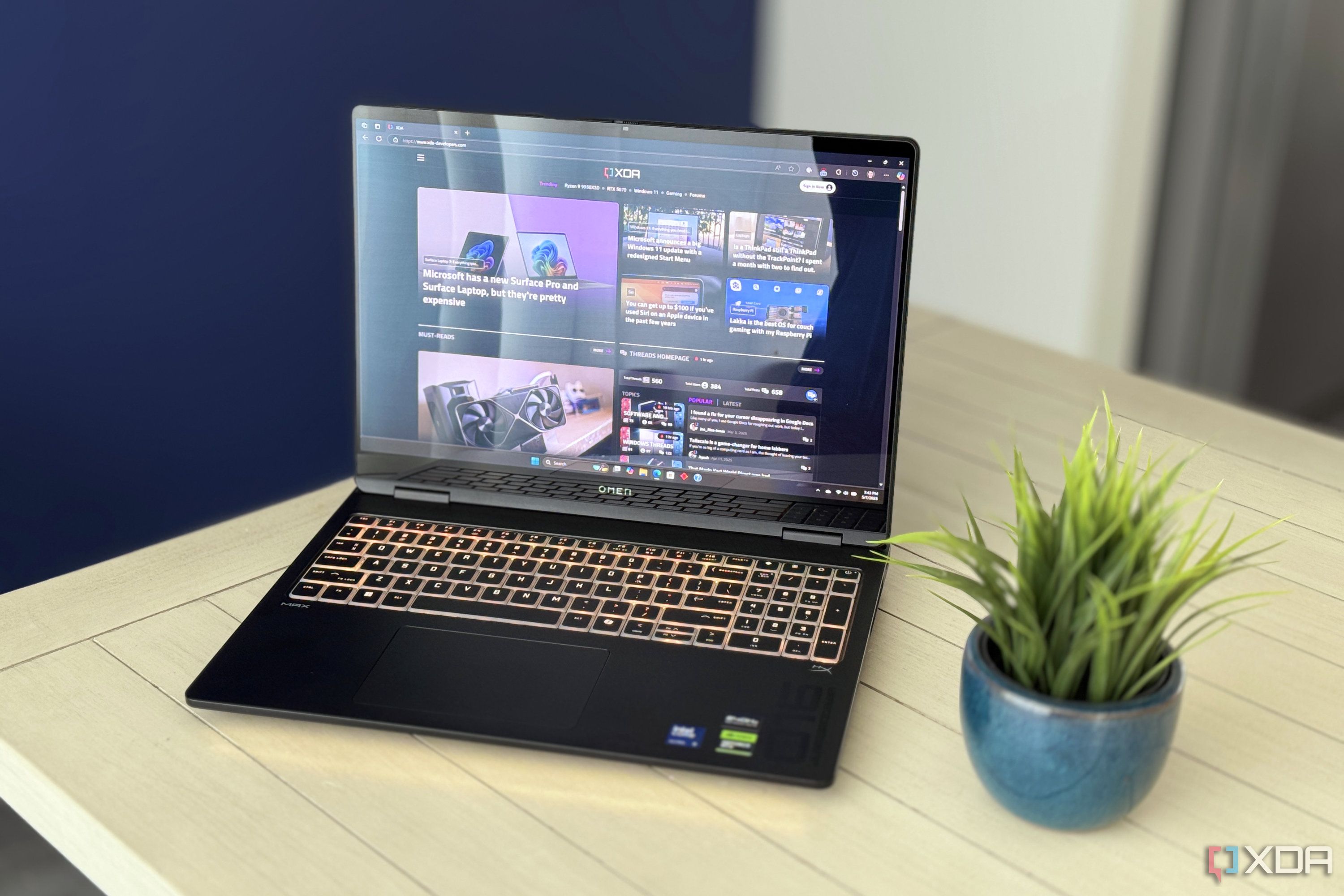
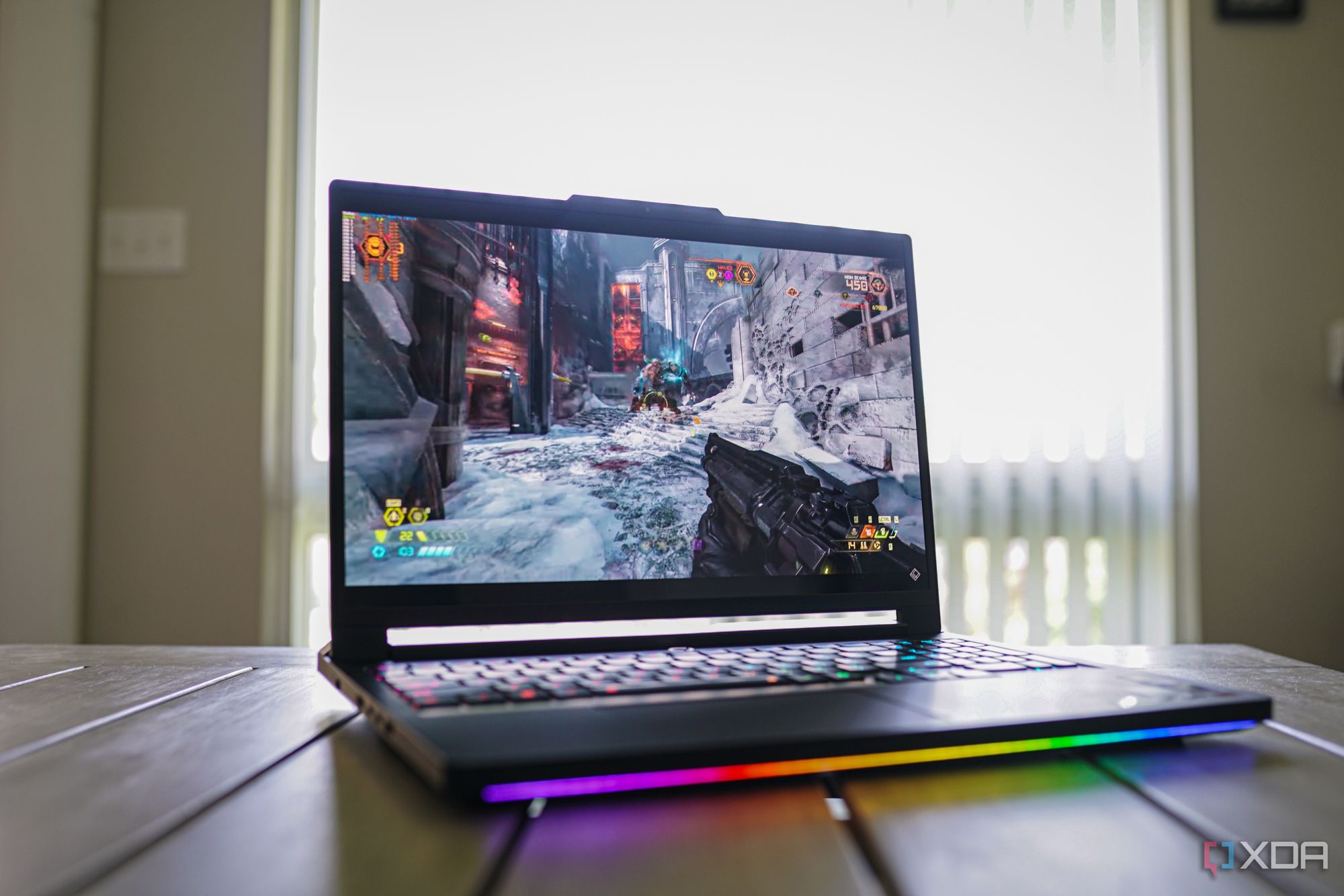
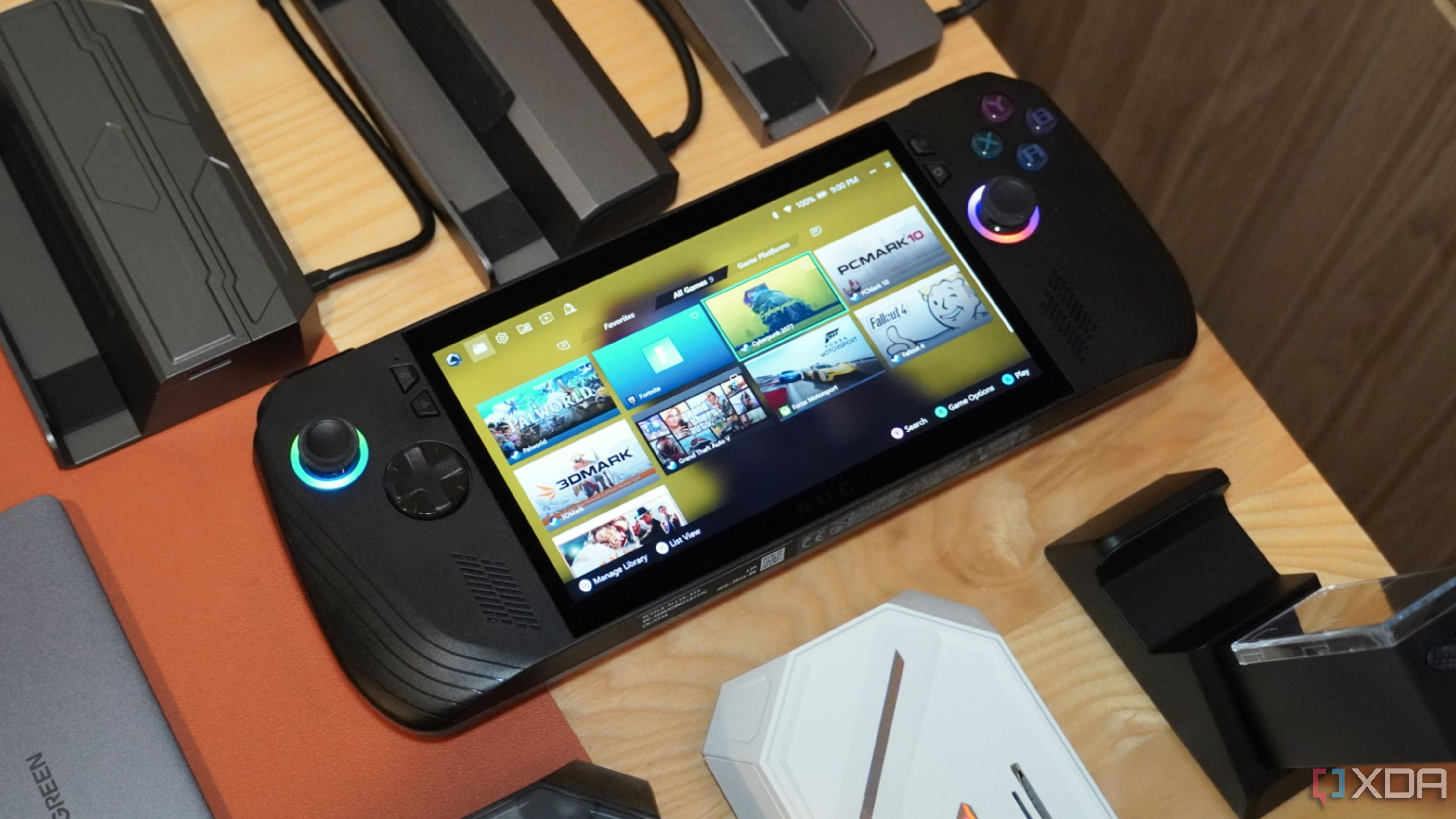











 English (US) ·
English (US) ·